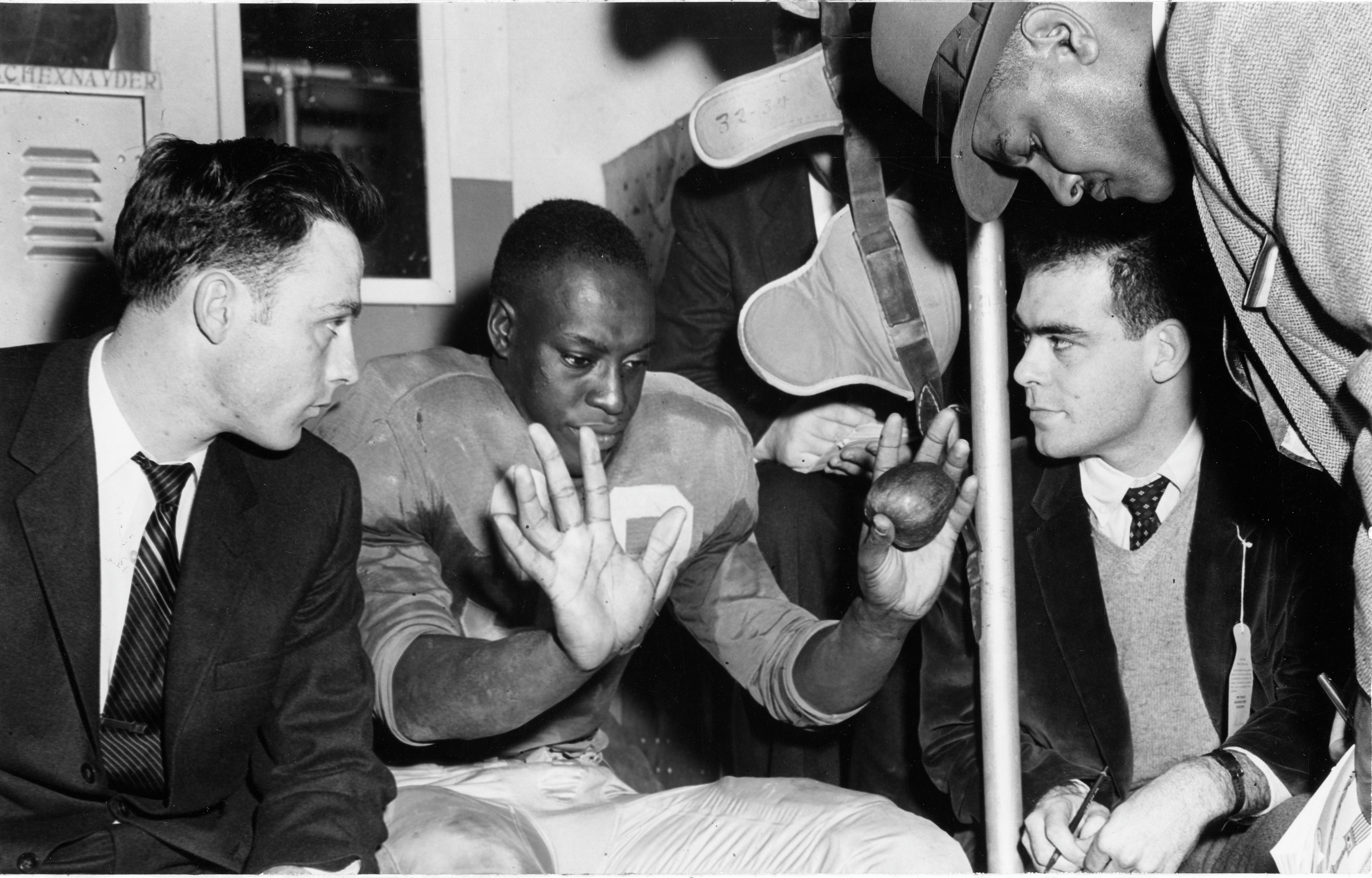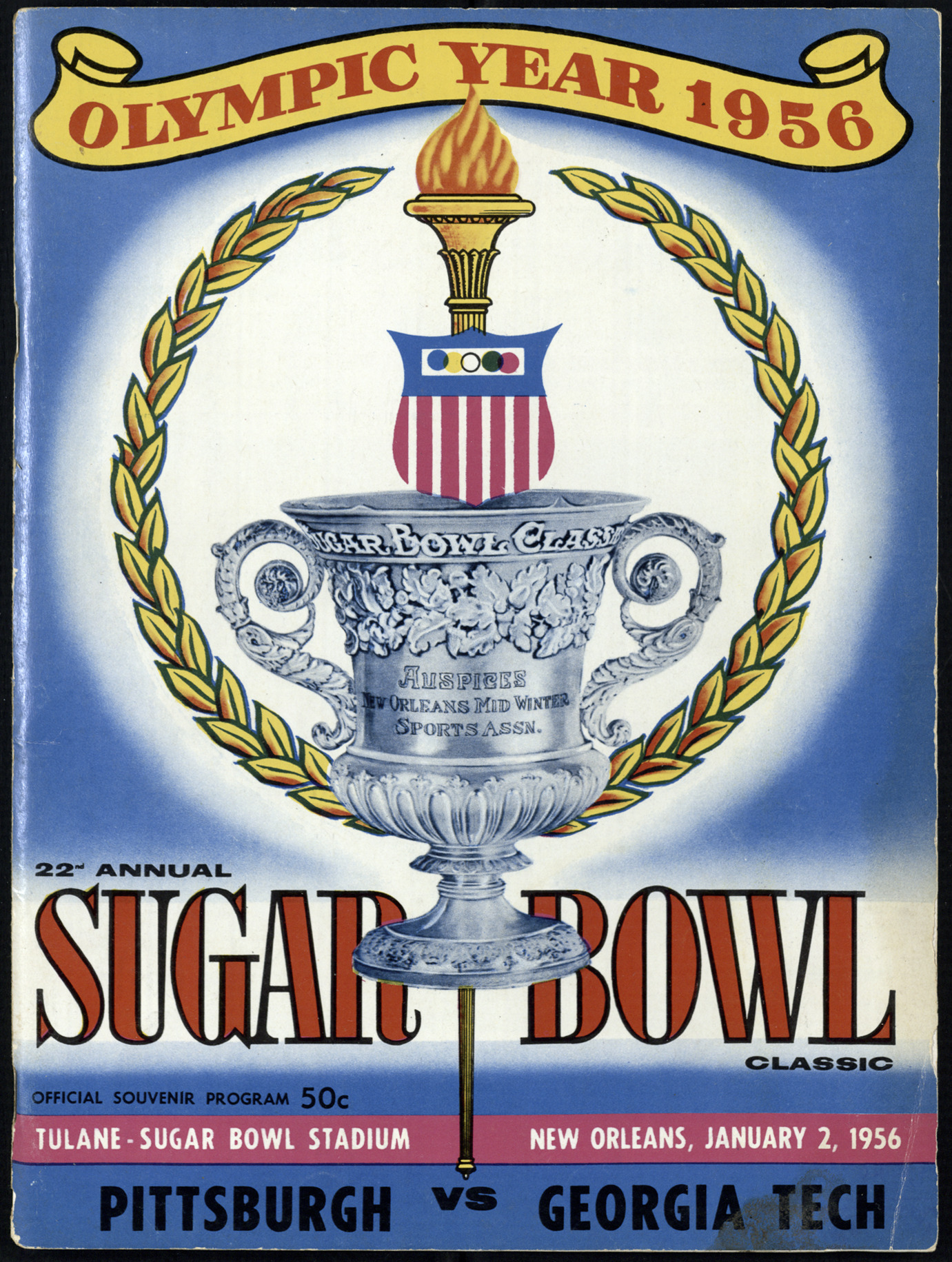
When the Sugar Bowl Committee invited the University of Pittsburgh to play Georgia Tech in the 1956 game, it put Pitt player Bobby Grier in the crosshairs. He was Pitt’s only black player and, in the midst of the civil rights movement, stood to become the first African American to play in the Sugar Bowl. Georgia Governor Marvin Griffin, appealing to segregationist voters in his state, protested Grier’s participation, infamously stating that “the South stands at Armageddon” on the issue. “It makes you feel kind of strange,” Grier said in a 2014 oral history. “Why would somebody be like that? This is football, you know. We don’t care about that.”
Grier had played an instrumental role in securing Pitt’s invitation to the Sugar Bowl, scoring four touchdowns—tied for second most on the team—as the team compiled a 7–3 record for the 1955 season. His teammates rallied behind him, agreeing that if Grier wasn’t allowed to play, they would not make the trip to New Orleans. Prior to Griffin’s remarks, the all-white Georgia Tech team had already taken its own vote, unanimously choosing to play the big game regardless of Grier’s status.
Grier ultimately took the field but couldn’t stop his team falling to Tech 7–0. His participation challenged the social conventions that empowered Jim Crow, but segregationist forces only hardened their stance, pushing through the Louisiana state legislature laws that placed tighter restrictions on integrated competition. Grier was the last African American player to appear in the Sugar Bowl until after President Lyndon B. Johnson signed the Civil Rights Act in 1964.
Education Resources
- Click here to listen to an excerpt from an oral history interview with Bobby Grier
- Click here to listen to Grier's full interview and browse the transcript
- Click here to browse the 1956 Sugar Bowl Classic Official Photo Album

Bobby Grier in locker roomJanuary 1, 1956The Historic New Orleans Collection, gift of the Sugar Bowl, 2007.0208.56

Souvenir program for 1956 Sugar Bowl
1956
The Historic New Orleans Collection, gift of David Monroe, 2009.0210.1.2
